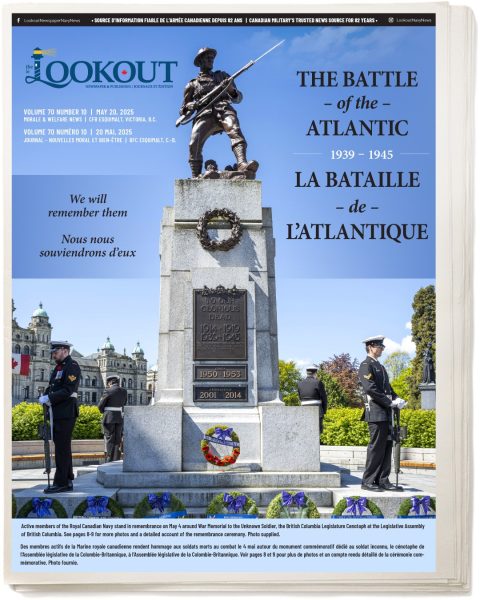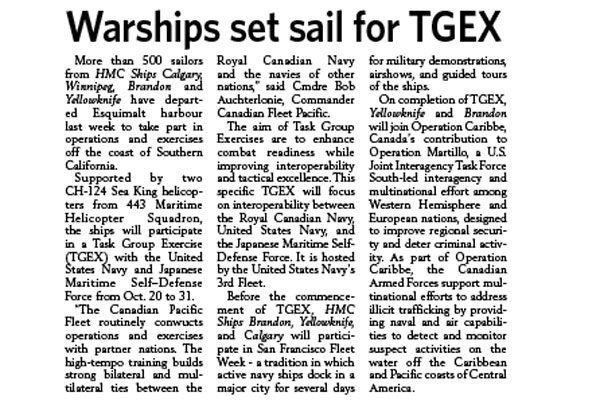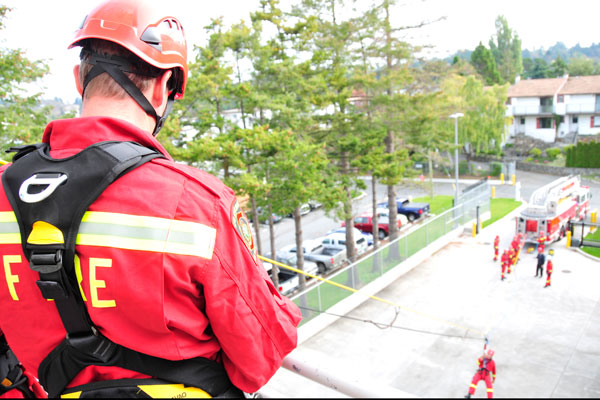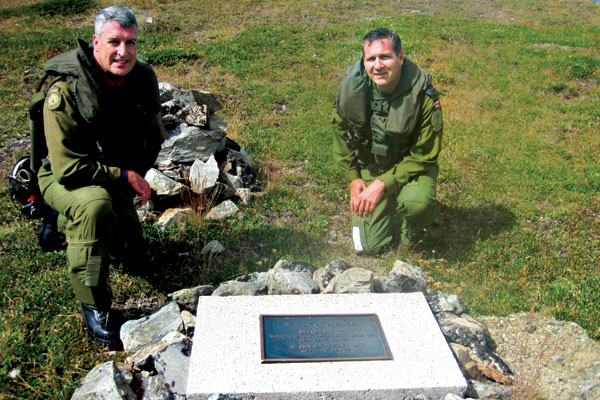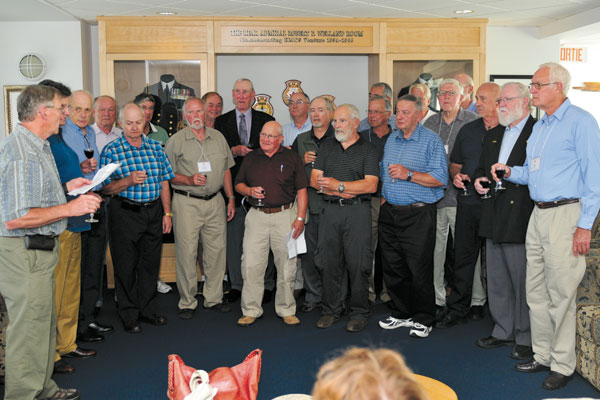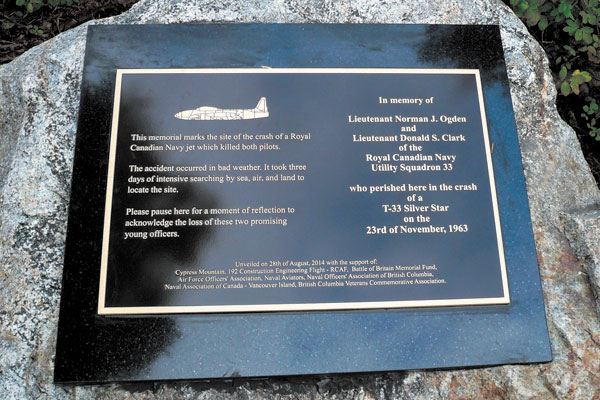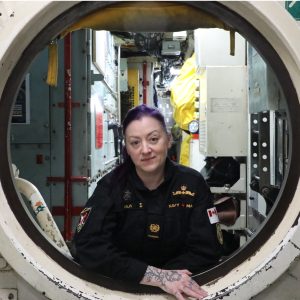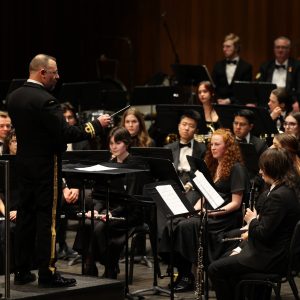
Sailor goes ashore for epic and grueling “jog”
[caption id="attachment_8363" align="alignnone" width="300"] Team Scrambled Eggs and Ham - LCdr Leung, Matt Campolongo and Colin Geddes - at the race finish with race directors Tex Geddes and Michael Templement.[/caption]Considered one of the most difficult ultramarathon on the planet, the Grand to Grand Ultramarathon (G2G) is gruelling says LCdr Francis Leung. It takes determined participants 273 kilometres, from the North Rim of the Grand Canyon in Arizona to the Grand Staircase in Utah.The naval officer knows this firsthand, having recently completed the race over seven days across a distance similar to that of Victoria to Campbell River, through storms, sand dunes, caves, canyons, and rocky, mountainous terrain.A veteran runner who put the sport aside for work and family, LCdr Leung considered training for the G2G as a way of regaining his edge,“I was a competitive athlete most of my life, but after a series of injuries compounded by demanding work schedules, I got into a fairly sedentary lifestyle,” he says. “I needed something like this to get back into shape.”LCdr Leung, and fellow runners Michael Templeman and Matthew Campolongo formed team Scrambled Legs and Ham. They set out Sept. 23 from the North Rim of the Grand Canyon, a legendary natural wonder.With a storm front on their heels, LCdr Leung and his team made good time for the first day, but with just 50 km under their belts, they knew there was still over 220 km of more punishing terrain ahead of them.“At one point on the first day, we could feel this cold front licking at our necks,” he says. “We later found out that the competitors behind us had to run through a flash flood with water up to their shins and chunky hailstones coming down on them. We were very lucky to miss that because it eventually...
